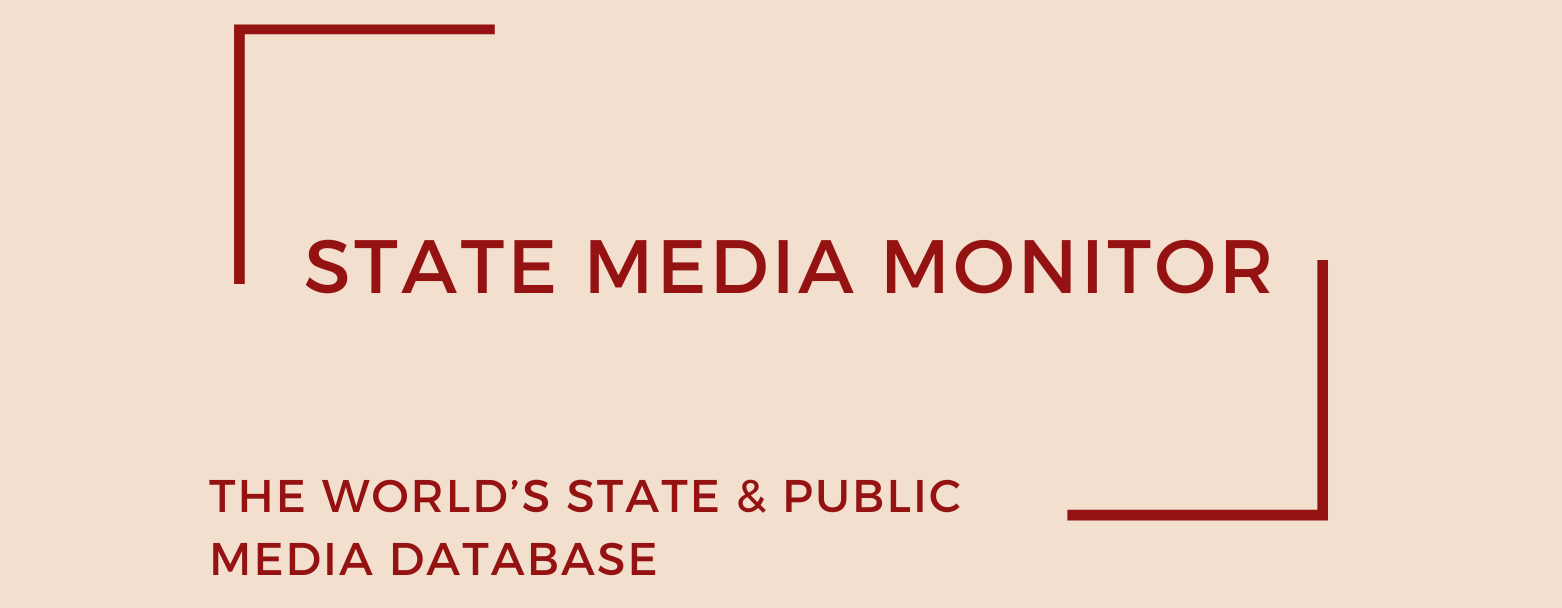Public Broadcasting Company of Ukraine (Suspilne)
The National Public Broadcasting Company of Ukraine (UA:PBC), operating under the brand name Suspilne Ukraine since its rebranding in 2022, is the country’s public broadcaster. Established in its current structure in 2017, it encompasses two nationwide television channels, three national radio stations, and a network of regional radio and television outlets across the country.
Its historical roots stretch back to 1924, when radio broadcasting was first introduced in Ukraine—then part of the Soviet Union. Television services followed in 1965. Prior to its transformation into UA:PBC, the broadcaster operated as the National Television Company of Ukraine (NTU), a fully state-run entity.
Media assets
Television: National- Pershyi, Suspilne Sport, Suspilne Kultura; Regional– Suspilne Crimea, Suspilne Cherkasy, Suspilne Chernihiv, Suspilne Chernivtsi, Suspilne Donbas, Suspilne Dnipro, Suspilne Kharkiv, Suspilne Kherson, Suspilne Khmelnytskyi, Suspilne Kiev, Suspilne Kropyvnytskyi, Suspilne Lviv, Suspilne Mykolaiv, Suspilne Odesa, Suspilne Poltava, Suspilne Rivne, Suspilne Sumy, Suspilne Ternopil, Suspilne Vinntysa, Suspilne Lutsk, Suspilne Uzhhorod, Suspilne Zaporizhzhia, Suspilne Zhytomyr
Radio: Radio Ukraine, Radio Promin, Radio Culture, Radio Ukraine International
State Media Matrix Typology
Independent State-Funded and State-Managed (ISFM)
Ownership and governance
UA:PBC was created under the Public Television and Radio Law of 2014 as a public joint-stock company wholly owned by the state. From its inception, the new framework was intended to ensure editorial and managerial independence from government interference.
The highest governing body of Suspilne is its Supervisory Board, originally composed of 17 members—eight nominated by parliamentary factions and nine by civil society organizations. After later amendments, the composition was reduced. As of 2025, the Board comprises 12 members, with seven proposed by civil society groups and five by parliamentary factions (including both ruling and opposition parties). This governance formula, weighted toward civic representation, is designed to bolster pluralism and insulate the broadcaster from political capture.
Source of funding and budget
Under the 2014 law, UA:PBC was to be financed exclusively from the state budget during its first four years of operation (2015–2018). From 2018 onwards, the broadcaster was legally permitted to generate its own revenues—through program sales, licensing, and intellectual property rights—although the largest part of its budget has continued to come from direct state subsidies. Broadcasting under the new public mandate began in 2017, three years after the legal framework was enacted.
The law stipulates that UA:PBC should receive at least 0.2% of the previous year’s state budget expenditure. In practice, however, successive governments have fallen short of this requirement, invoking emergencies and fiscal constraints to reduce allocations.
In 2020, UA:PBC received UAH 1.7bn (US$ 59.5m), about UAH 300m below the legal threshold. This allocation represented roughly 95% of the broadcaster’s budget, underscoring its near-total dependence on public funds. In 2021, funding rose modestly to UAH 1.87bn (US$ 63.1m), which was still only 82% of the mandated level, according to IREX. In 2024, Suspilne’s budget stood at UAH 1.85bn (approx. US$ 50m), according to domestic media reports.
In 2020, the state allocated a total of UAH 1.7bn (US$ 59.5m) to UA:PBC, which represented a reduction of approximately UAH 300m below the amount stipulated by law. The government allocation for 2020 represented nearly 95% of the broadcaster’s budget. Since the war in Ukraine began, there has been no change in the situation, with the majority of UA:PBC’s funding still coming from the government. However, the government increased its contribution. In 2021, UA:PBC received approximately UAH 1.87bn (US$ 63.1m) from the government, representing approximately 82% of the legal requirement, according to data collected by IREX. In 2024, Suspilne’s budget stood at UAH 1.85bn (approx. US$ 50m), according to domestic media reports.
As of mid-2025, state support remains dominant, with Suspilne’s independent revenue streams accounting for a marginal share of its income. Debates within Parliament continue over the adequacy of funding, with lawmakers acknowledging the importance of a resilient public broadcaster during wartime yet citing military expenditure priorities to justify shortfalls.
Editorial independence
The reorganization of Ukraine’s state media in 2014 was conceived with one overarching goal: to create a genuinely independent public broadcaster able to serve citizens rather than the government of the day. Editorial autonomy was enshrined in law and reinforced through internal charters.
While political figures have repeatedly tested these boundaries—attempting, for example, to mandate greater airtime for local officials—Suspilne has largely succeeded in fending off such pressures. Several landmark episodes illustrate this resilience. In 2019, CEO Zurab Alasania, a prominent journalist, was controversially dismissed by the Supervisory Board. He successfully challenged the decision in court and was reinstated. Over the years, Suspilne has produced some of the country’s most probing investigative and political programs, earning recognition for journalistic integrity despite attempts at interference.
During the war with Russia (2022–present), political pressure intensified. Nonetheless, Suspilne has consistently defended its editorial line, backed by strong public and journalistic solidarity.
The broadcaster’s independence rests on multiple safeguards. The Law on Public Television and Radio explicitly prohibits external interference in editorial decision-making and stipulates that the broadcaster is not obliged to cover state officials. In 2018, Suspilne adopted its Editorial Charter, codifying professional standards and principles of independence.
Additionally, an Editorial Board of 15 members, appointed equally by the Supervisory Board, Suspilne’s editorial staff, and regional broadcaster editorial boards, monitors editorial performance and offers recommendations. This pluralistic composition ensures that no single stakeholder dominates the oversight of content.
August 2025
Citation (cite the article/profile as part of):
Dragomir, M. (2025). State Media Monitor Global Dataset 2025.
Media and Journalism Research Center (MJRC).
Zenodo.
https://doi.org/10.5281/zenodo.17219015
This article/profile is part of the State Media Monitor Global Dataset 2025, a continuously updated dataset published by the Media and Journalism Research Center (MJRC).
